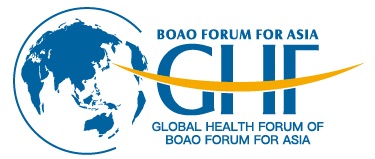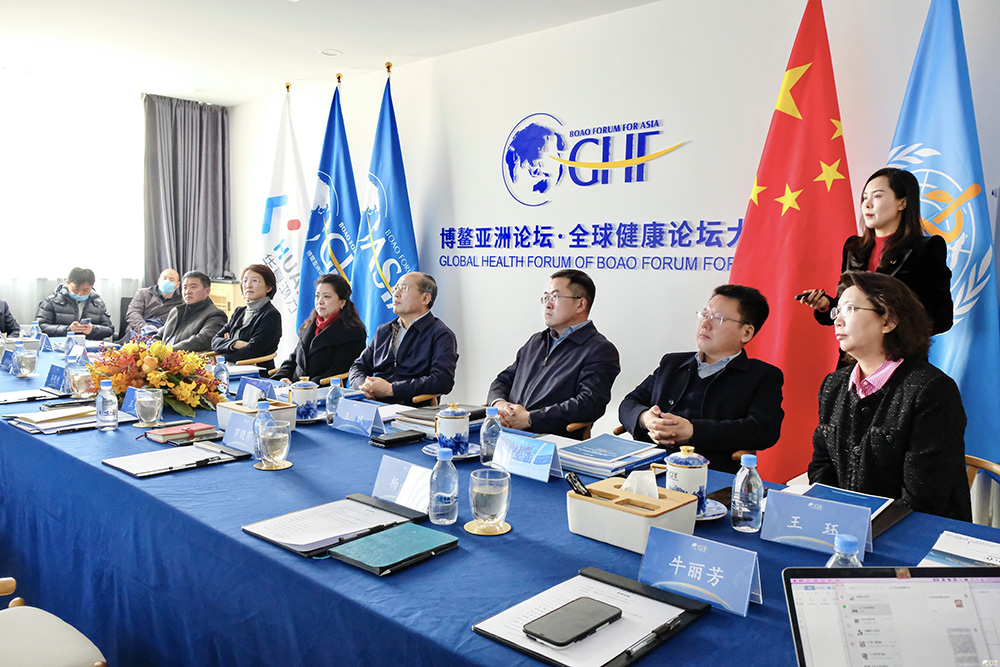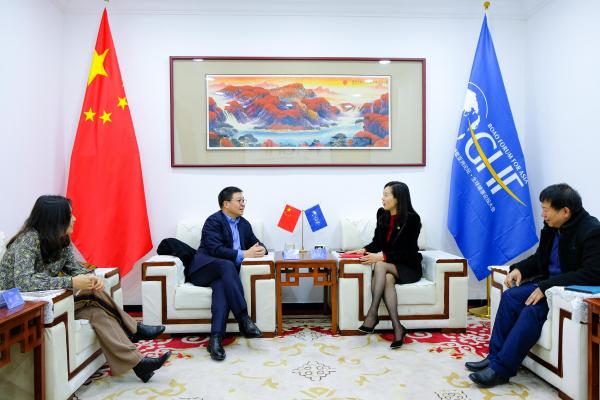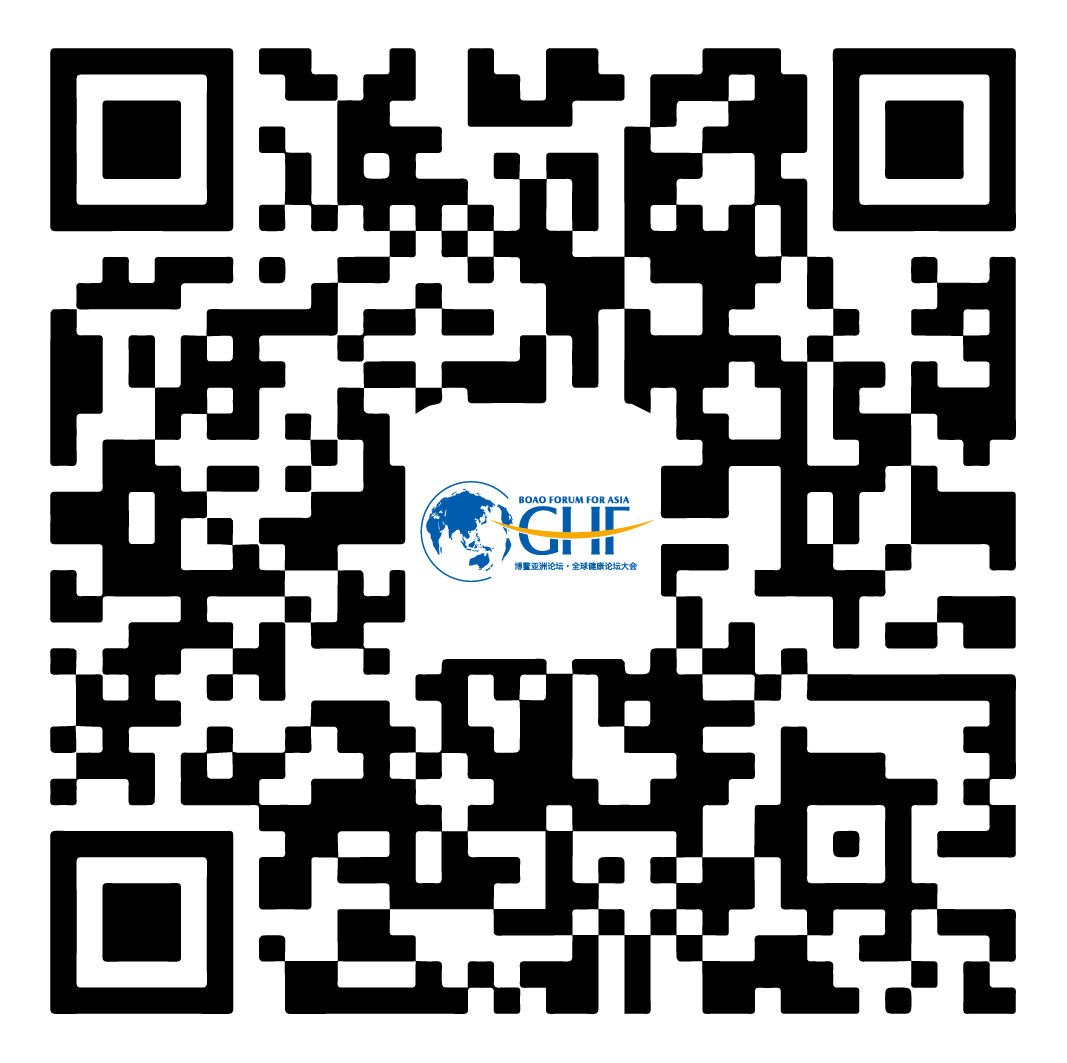On the afternoon of June 1, Wang Ziping, President of the New Chinese Medicine Branch of the China Association for the Research and Promotion of Chinese Medicine and President of the Nanjing Institute of New Chinese Medicine, delivered a speech, entitled “Introduction to New Traditional Chinese Medicine (TCM)”, at Chinese Medicine Health Forum hosted by the second Global Health Forum of Boao Forum for Asia, where he proposed the idea of "New TCM - Inherite the essence and Innovate on the basis of tradition".

Wang Ziping, President of the New Chinese Medicine Branch of the China Association for the Research and Promotion of Chinese Medicine and President of the Nanjing Institute of New Chinese Medicine
Wang Ziping started with an analysis on the current situation of contemporary mainstream TCM. He believed that since Eastern Han Dynasty when Zhang Zhongjing was, the current "mainstream TCM" has been a "medicine oriented" system of diagnosis and treatment. The efficacy of the current mainstream TCM system lacks reproducibility and has not yet been further improved to highlight its disruptive efficacy in solving health problems. "The key problem is that TCM has not yet been combined with modern technology. Acupuncture should be combined with anatomy, and Chinese medicine with pharmacology and pharmacokinetics, which will make the problem much clear. Otherwise, even if we use administrative means to promote it, we still can't revive Chinese medicine."
Regarding the differences and similarities between Chinese and Western medicine, Wang Ziping believed that there are differences in their philosophical foundations and treatment concepts, but they are both based on anatomy. As a result, he proposed the idea of "New TCM - Inherite the essence and Innovate on the basis of tradition".
The so-called new TCM treatment system is a new medical system led by the TCM diagnosis and treatment philosophy (which is to stimulate the body's own healing immunity), based on anatomy, and reconstructed by integrating and optimizing various kinds of medicine. It is not only based on theories, but also adopts a set of mature clinical practice methods. The new TCM holistic diagnosis and treatment concept and treatment mode include the original diagnosis and treatment concept and mode of Chinese and Western medicine, and make innovations on Chinese and Western medicine in a way of cross discipline; it is not only a driving force of leading Western medicine to break through the bottleneck of development, but also makes TCM a frontier science of medical development.
According to the concept of new traditional Chinese medicine, Wang Ziping emphasized five “returns”.
First, TCM needs to return to the status of natural science based on anatomy. "In at least two thousand years of inheritance, TCM has focused only on functional anatomy but lacked structural anatomy, which led to the lack of development of various acupuncture techniques and surgery in TCM and a break in inheritance."
According to Wang Ziping, the development of modern technology and medicine has seen a leap forward in human anatomy, physiology, and the knowledge and treatment of diseases, compared to the past thousands of years. Relying on the results of physical and chemical examinations, ultrasound, and imaging, the knowledge and diagnosis methods of diseases have greatly extended the breadth and depth of the four diagnoses of TCM, providing a new and reliable objective basis for TCM clinics. This is also a necessity for TCM to develop toward precision.
Second, TCM needs to return to the treatment principle of "Use acupuncture first, then moxibustion, and at last medicines" in the Yellow Emperor's Classic of Internal Medicine. The Yellow Emperor's Classic of Internal Medicine mentions the efficacy of acupuncture and moxibustion: "The effect of acupuncture is like the wind blows away the clouds, and the sky turns clear and bright." This is the origin of the "Use acupuncture first, then moxibustion, and at last medicines" treatment principle, which is taught in ancient Chinese medicine.
Third, TCM needs to return to the methodology in the Yellow Emperor's Classic of Internal Medicine, which is "treat with a combination of all kinds of medicines, each one in its own way". The general meaning is that the sages of the ancient commonwealth society were able to use a variety of treatment methods in a comprehensive manner, and treat the patients depending on the conditions of time, place, and individuals. Therefore, the same disease can be cured by different methods. By learning these different causes of disease, different methods of treatment can be applied. Wang Ziping emphasized the importance of this methodology and called for the abandonment of the sectarian views of various schools of Chinese medicine.
Fourth, TCM needs to return to the "treat one person with thirteen disciplines" model of treatment. This treatment model can be simply explained as starting from the whole body and treating different diseases at the same time, breaking the modern medical treatment model of treating diseases according to the functions and tissues of the human body. For example, through acupuncture and other methods of treatment, the undirected stem cells and macrophages present in the fascia all over the body are activated to improve the immunity of the human body, thus curing various diseases. This reflects the holistic dialectical diagnosis and treatment concept of TCM and shows that TCM treatment is not only treating the part. In other words, it is not just "treating the head when it hurts and treating the foot when it hurts", but "treating the head and the foot when the head hurts and treating the foot and the head when the foot hurts ".
Fifth, TCM needs to return to a holistic view of the meridians as a connection based on "fascial anatomy". According to Western medicine, if the fascia is contracted for various reasons, it will lead to various diseases, while from the perspective of Chinese medicine, it is "unblocked - pain". Wang Ziping believed that if the fascia is not blocked, the meridians are unblocked, and if the meridians are unblocked, there will be no disease. The various methods and means used by traditional Chinese medicine are to unblock the meridians to achieve the purpose of healing, and the intervention of Chinese medicine such as acupuncture, massage, moxibustion and medicine is mainly on the fascia tissue.
Finally, Wang Ziping concluded, "We should overcome the opposition between Chinese and Western medicine and build a new medical system." The new TCM diagnosis and treatment system starts from the anatomy of fascia, which reveals the relationship between the fascial tissues, i.e., the meridians and the "five bodies" and the internal organs of TCM, and confirms the scientific nature of the diagnosis and treatment experience and ideas of TCM under the guidance of the holistic view, such as treating the disease in the upper part of body by intervention on the lower part of body, and vice versa. It also reveals the mechanism of flexible application of different methods to treat different diseases of the same body, and returns to the treatment mode of "different treatment for the same disease, different treatment for different diseases" and "treat one person with thirteen disciplines". It breaks the diagnosis and treatment mode of modern medicine that divides clinics according to the function and structure of the human body, as well as of Chinese medicine.



 Reports
Reports
 Partner application
Partner application Download
Download Hot News
Hot News









